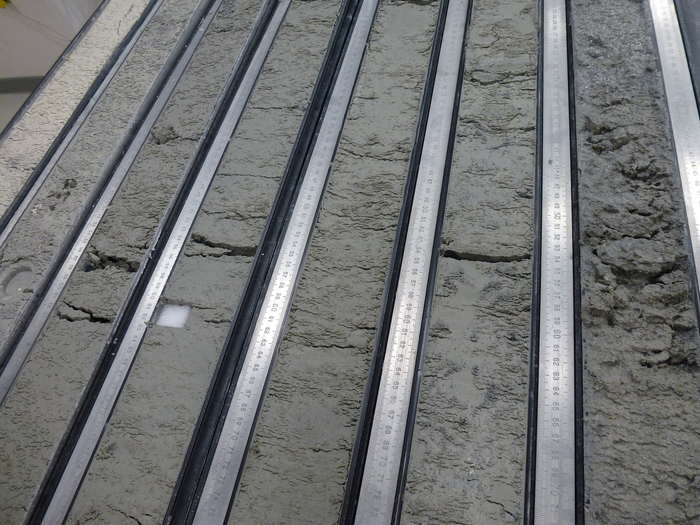Drilling deep inside sediments on the ocean floor has helped scientists to travel back in time. Currently, a research group headed by the Uppsala University presents fresh clues as to when and why a period often cited as the “biogenic bloom” came to a sudden end.
 Karatsolis et al. studied drill cores from seafloor sediments recovered by the International Ocean Discovery Program (IODP), including IODP Expedition 356, in which sediment archives were drilled on the northwestern Australian shelf. Image Credit: J. Henderiks.
Karatsolis et al. studied drill cores from seafloor sediments recovered by the International Ocean Discovery Program (IODP), including IODP Expedition 356, in which sediment archives were drilled on the northwestern Australian shelf. Image Credit: J. Henderiks.
Variations in the Earth’s orbit shape near the Sun might have played a part in the striking change. Healthy ocean systems include primary producers, like the single-celled algae diatoms and coccolithophores, sustaining all other life in the oceans via the marine food webs.
The primary producers discharge oxygen and control the climate by taking up CO2 and linking carbon into solid components that are buried in deep-sea sediments. This seems to be an efficient long-term solution for carbon removal from the air.
The majority of these algae tend to utilize CO2, sunlight and inorganic nutrients to increase their body mass. But these nutrients are rapidly exhausted in the sun-lit surface waters, if not refilled by ocean mixing or renewed by river supply.
As far as the Earth’s history is concerned, paleoceanographers rebuilt changes in primary productivity by watching algal remains buried in ocean-floor sediments.
Even though only a small fraction of surface water production has been recorded in marine sediments, on geological time scales, variations in the collection of biogenic sediments (such as the calcareous scales of coccolithophores and siliceous shells of diatoms) are associated with past changes in ocean productivity.
It is essential to comprehend what factors impact ocean productivity on a global scale, but also how fast or slow this complicated system might respond to environmental variations.
For the past several decades, geoscientists are familiar with the extended period when ocean productivity was much higher compared to what it is at present. This took place during the late Miocene to early Pliocene (from 9 to 3.5 million years ago), and the period is often known as “biogenic bloom.” But so far, researchers still do not completely comprehend the reasons why productivity was so much greater in the past, or why this period ended.
A research group collaborating with Boris-Theofanis Karatsolis, a Ph.D. student at Uppsala University integrated multiple deep-sea sediment drill cores from all significant oceans to examine the reason for the end of the high ocean productivity.
With the help of scientific ocean drilling, it is possible to drill in waters as deep as 4 km and still operate 1 km down into the sediments. It helps recover millions of years of ocean history.
The sediments investigated by Karatsolis and collaborators were recovered from 200–350 m below the seafloor on the northwestern Australian shelf.
The scientists quantified the accumulation rates of biogenic particles and integrated their data with those gathered earlier using similar methods at 16 extra locations. The precision of the ages of each dataset was first crucially evaluated, to guarantee reliable comparisons throughout the different regions.
The findings reveal that in the tropics 4.6 million years ago, productivity dropped suddenly. A possible clarification for this quick decrease might involve decreased East Asian monsoon intensity and reduced riverine nutrient supply. This coincides with variations in the shape of the Earth’s orbit around the Sun.
The study provides new insights into the larger puzzle but additional investigations are required to gain a better understanding of the mechanisms behind this event.
Understanding the natural pace of past events provides a good comparative measuring stick for the changes we observe in our environment today.
Boris-Theofanis Karatsolis, PhD Student, Uppsala University
Journal Reference:
Karatsolis, B-T., et al. (2022) Abrupt conclusion of the late Miocene-early Pliocene biogenic bloom at 4.6–4.4 Ma. Nature Communications. doi.org/10.1038/s41467-021-27784-6.